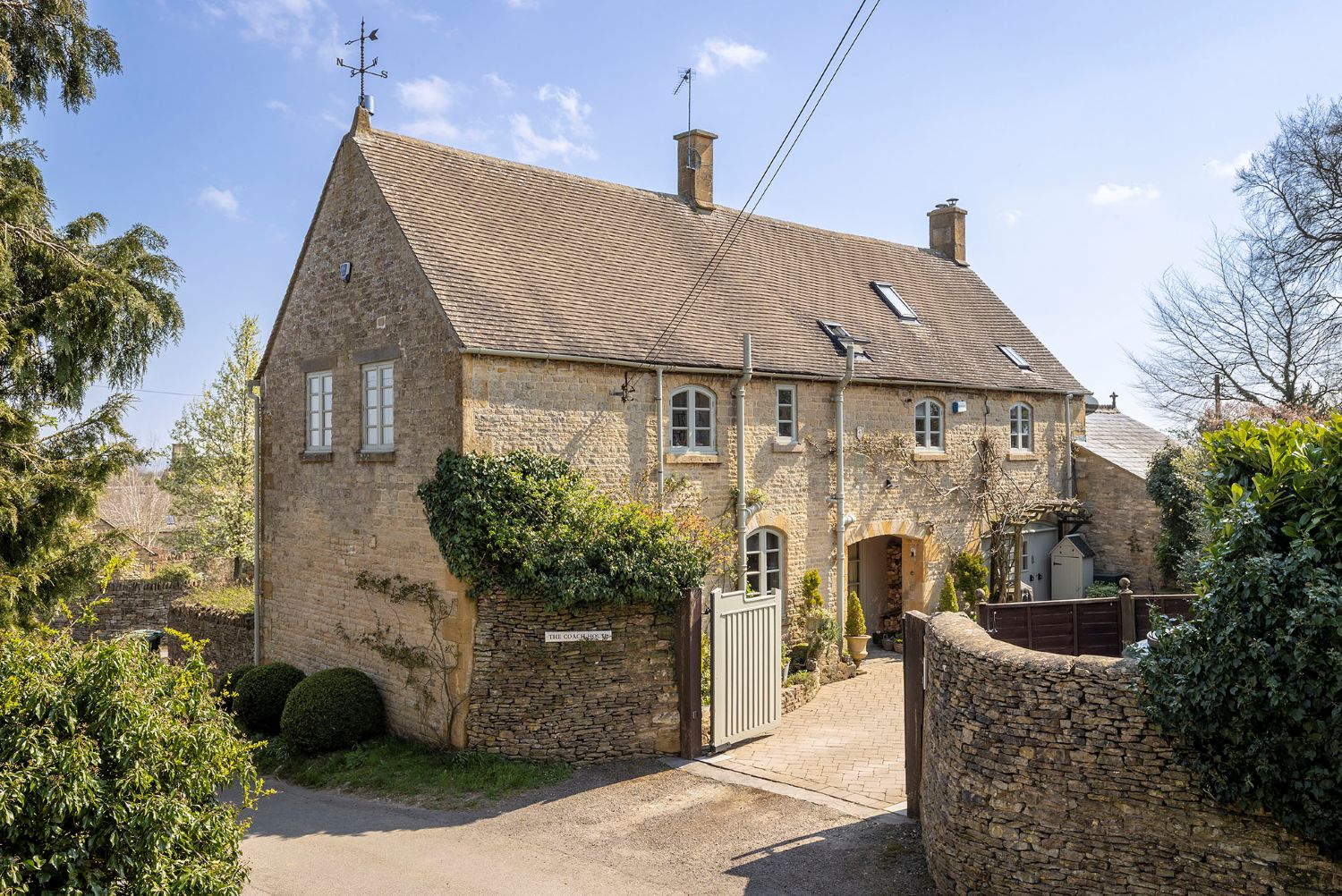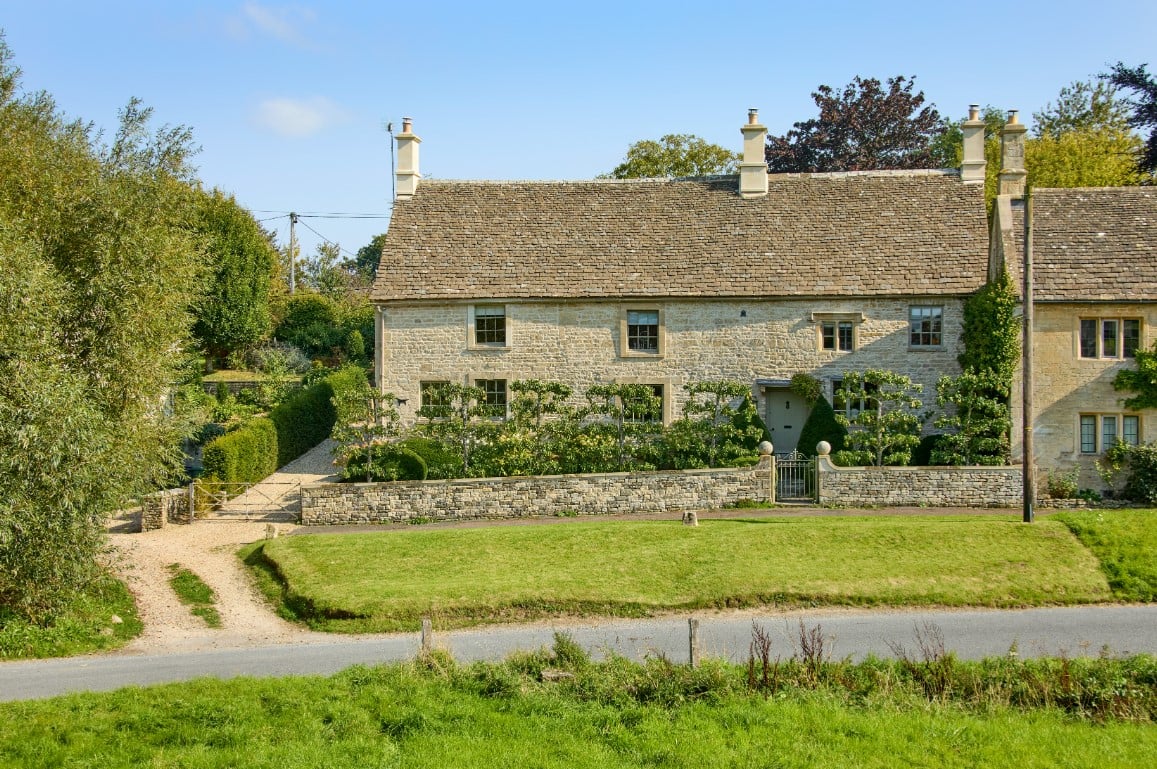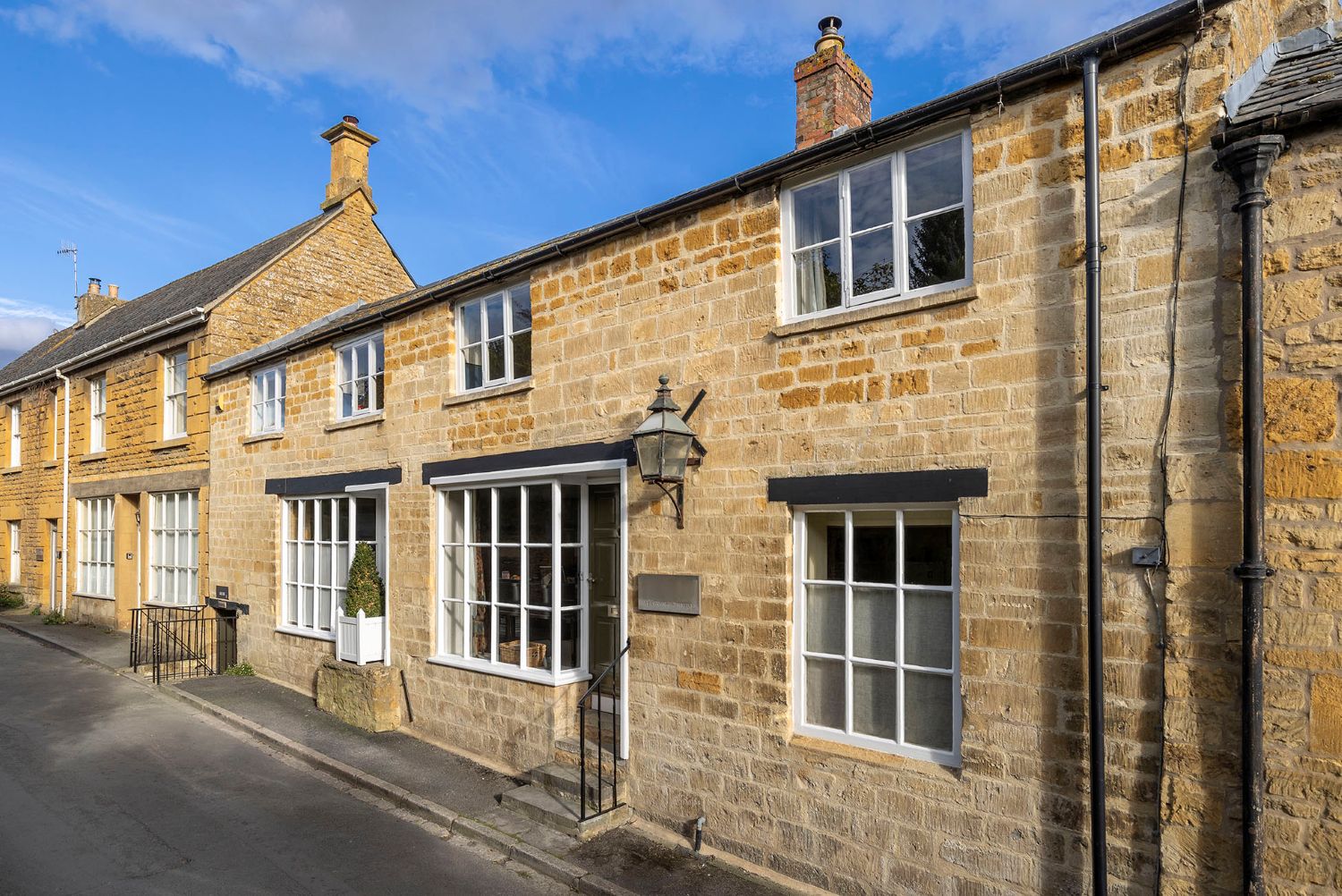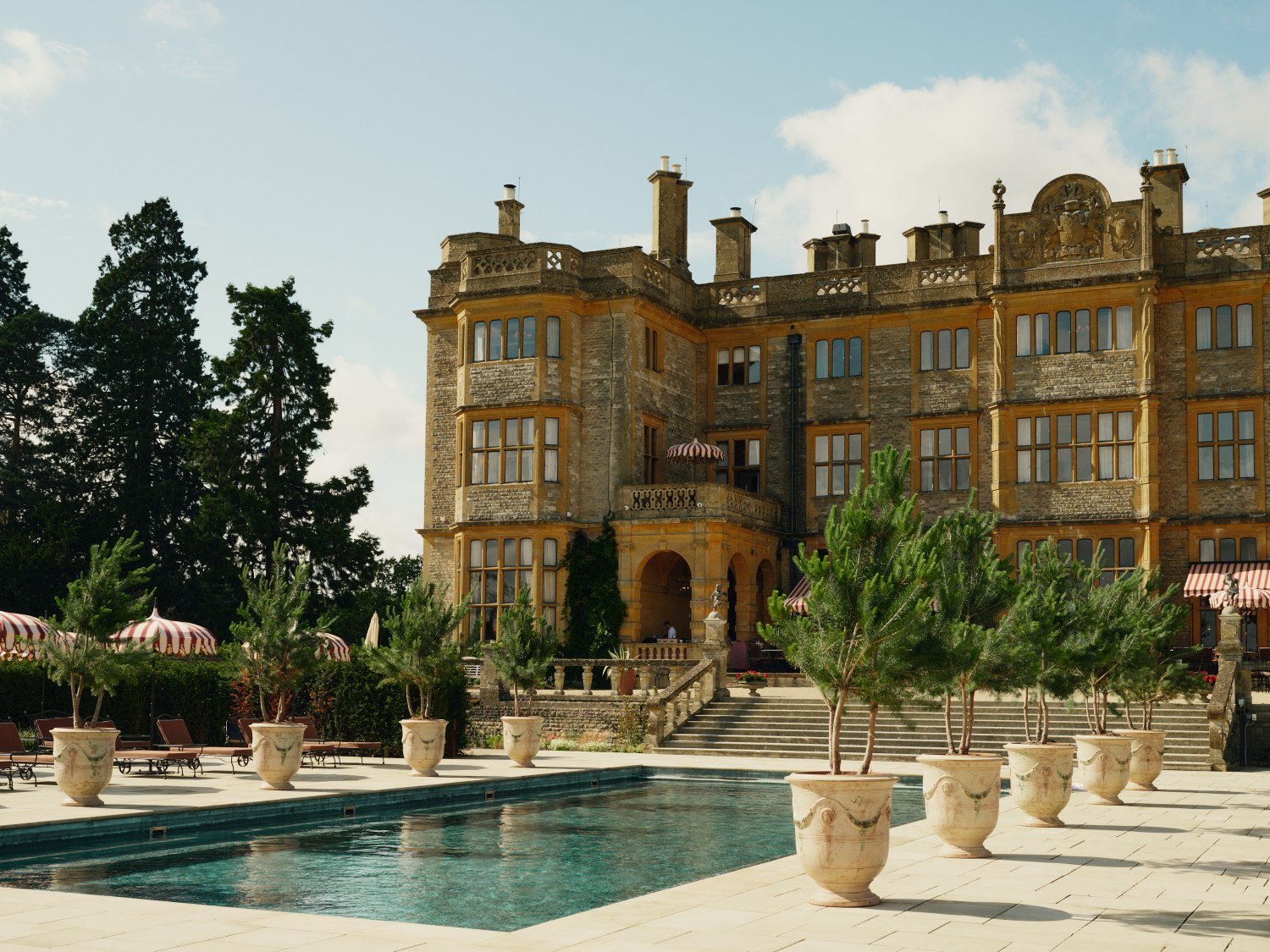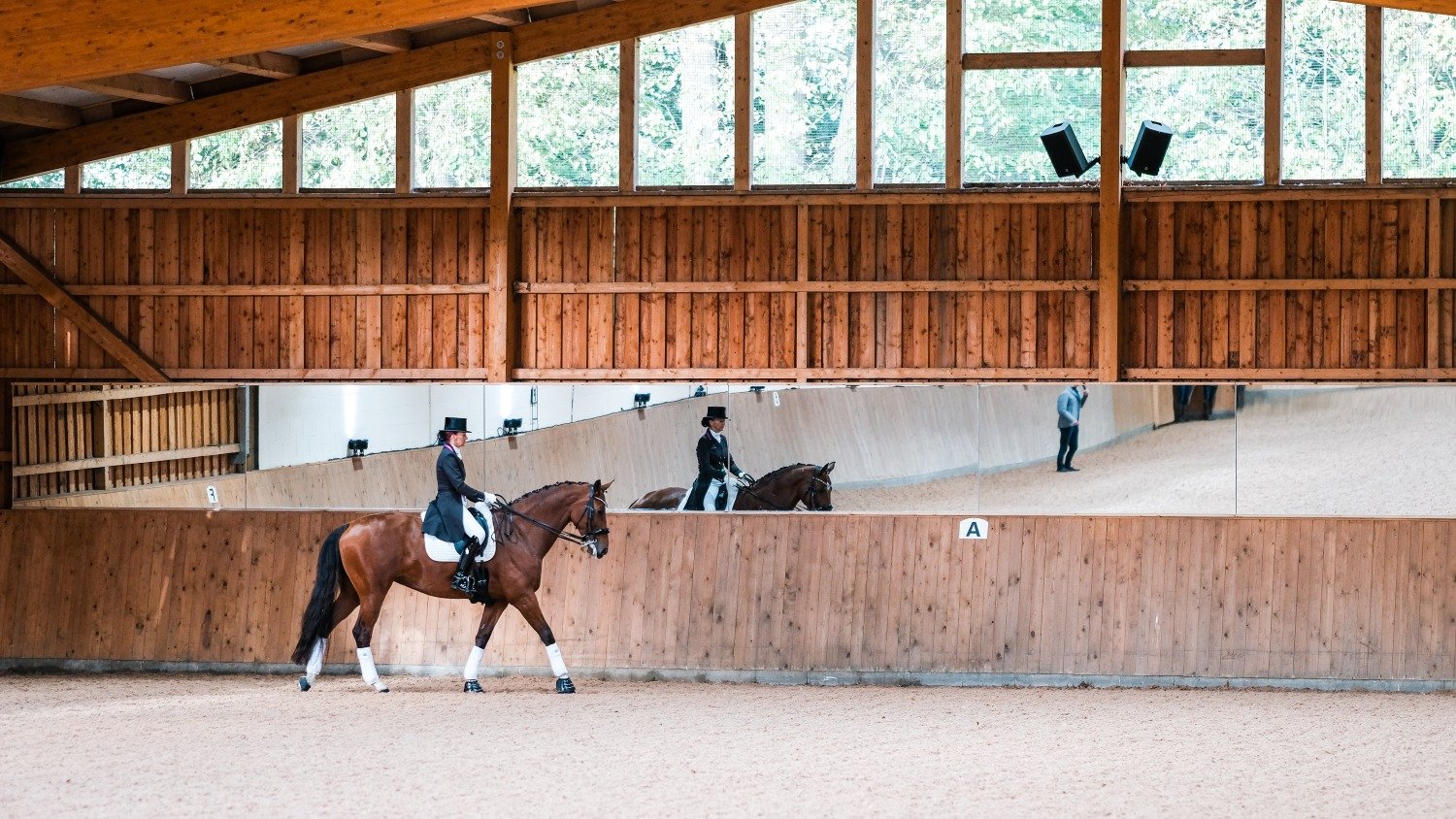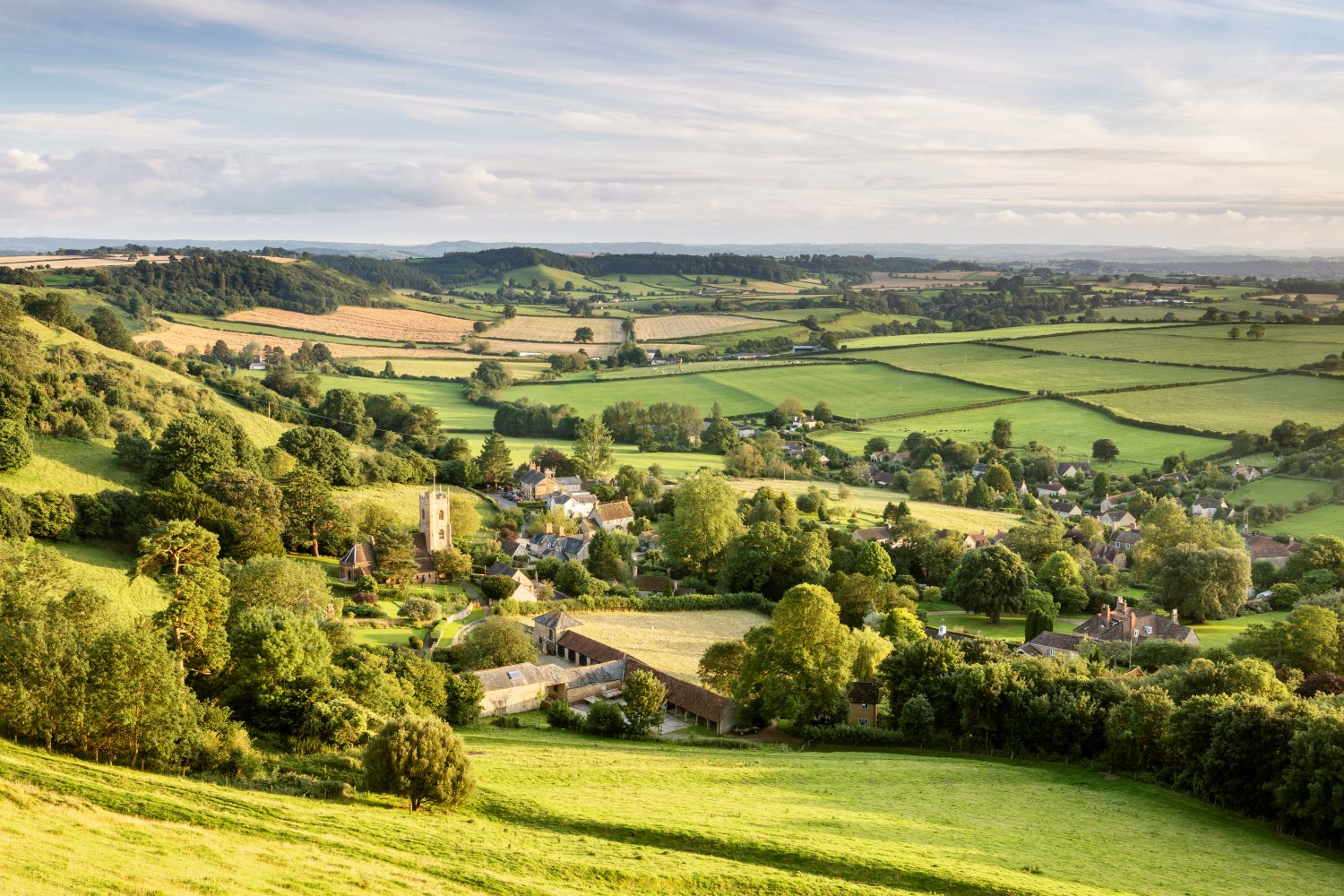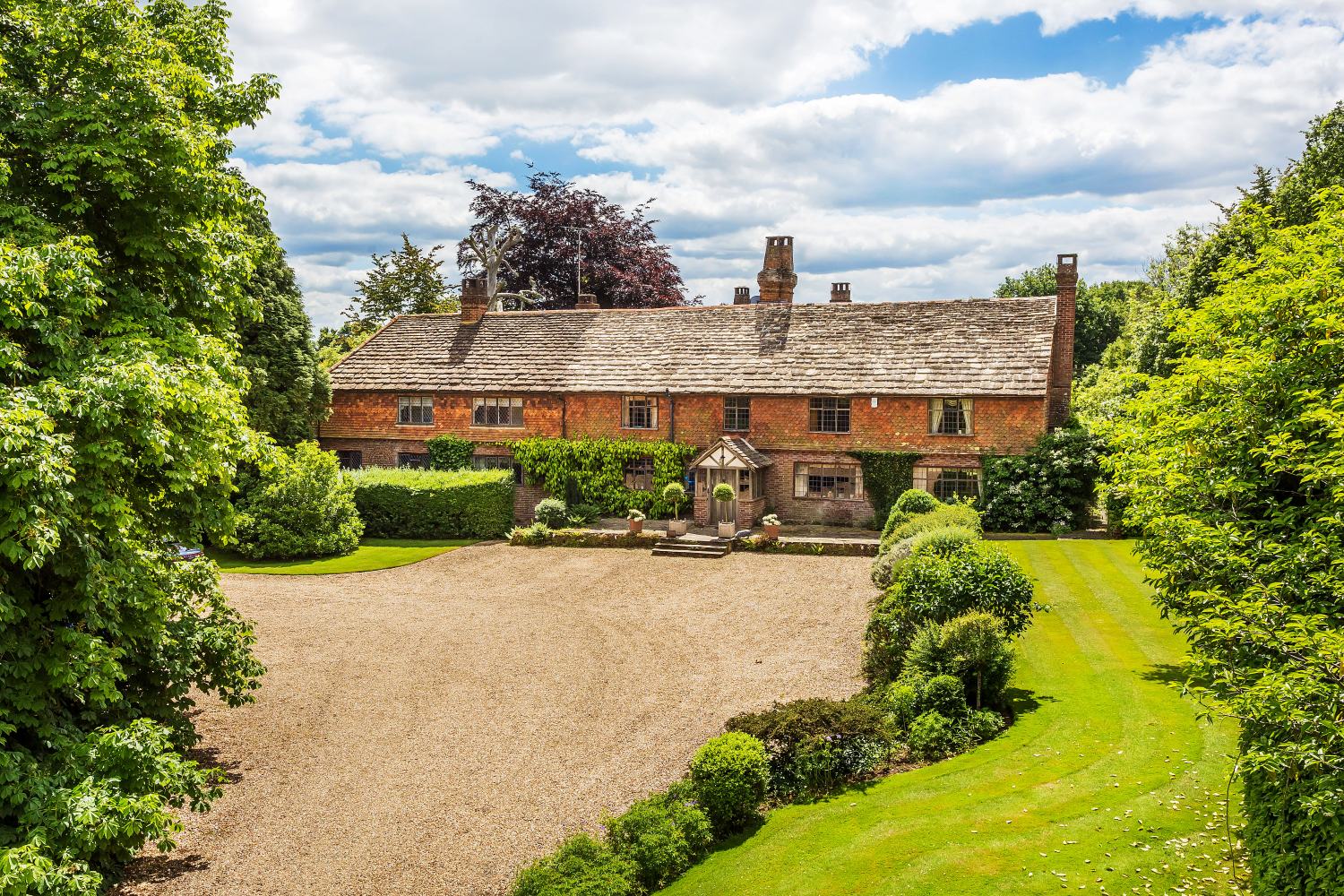Crafts in the Cotswolds: In the studio with sculptor David Williams-Ellis
We head to the beautiful Oxfordshire countryside to delve into the creative process behind the renowned sculptor’s evocative works
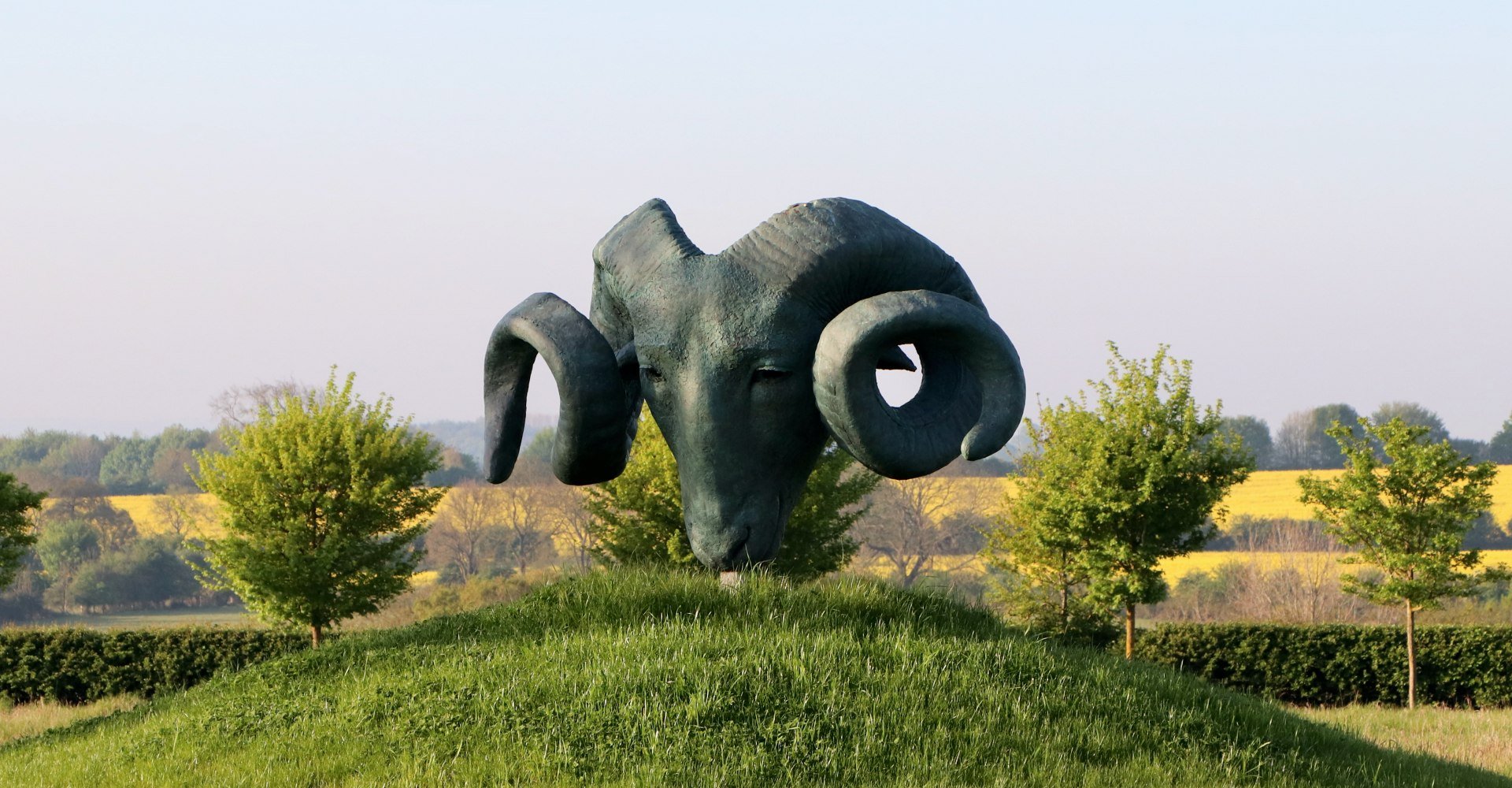
In the first in our Crafts in the Cotswolds series, highlighting the creativity found in the charming countryside region, we catch up with sculptor David Williams-Ellis.
From his home in serene and natural Oxfordshire countryside, north of Oxford, south of Banbury and just four miles from Soho Farmhouse, David Williams-Ellis creates magnificent award-winning bronze sculptures. Recent projects include a 7 foot statue for Harrow School, to be unveiled this summer, and a gravity-defying private commission focused on ‘flight’. Currently taking centre stage in his studio is the initial metalwork for a larger than life sculpture of an osprey, the result of detailed research that included many hours examining osprey skeletons in the University of Cambridge’s Museum of Zoology.
For visitors to David’s studio, it’s apparent that a master craftsman is at work as soon as you turn off the quiet country lane to reach the house where he has lived with his wife Nikki for the past decade. Examples of his award-winning work are on show throughout the grounds, starting with The Muses, two larger than life figures that stand – or rather sit - sentinel on tall gateposts, the originals commissioned for a private collector in Cumbria. The Ram, a super-sized ram’s head sculpture in his garden – 3 metres by 2 metres complete with tactile curling horns – is a prototype for an even larger 8 by 5 metres bronze statue destined for an estate in Oxfordshire.
The key to a really successful sculpture is to catch that little bit of magic that gets you in the stomach
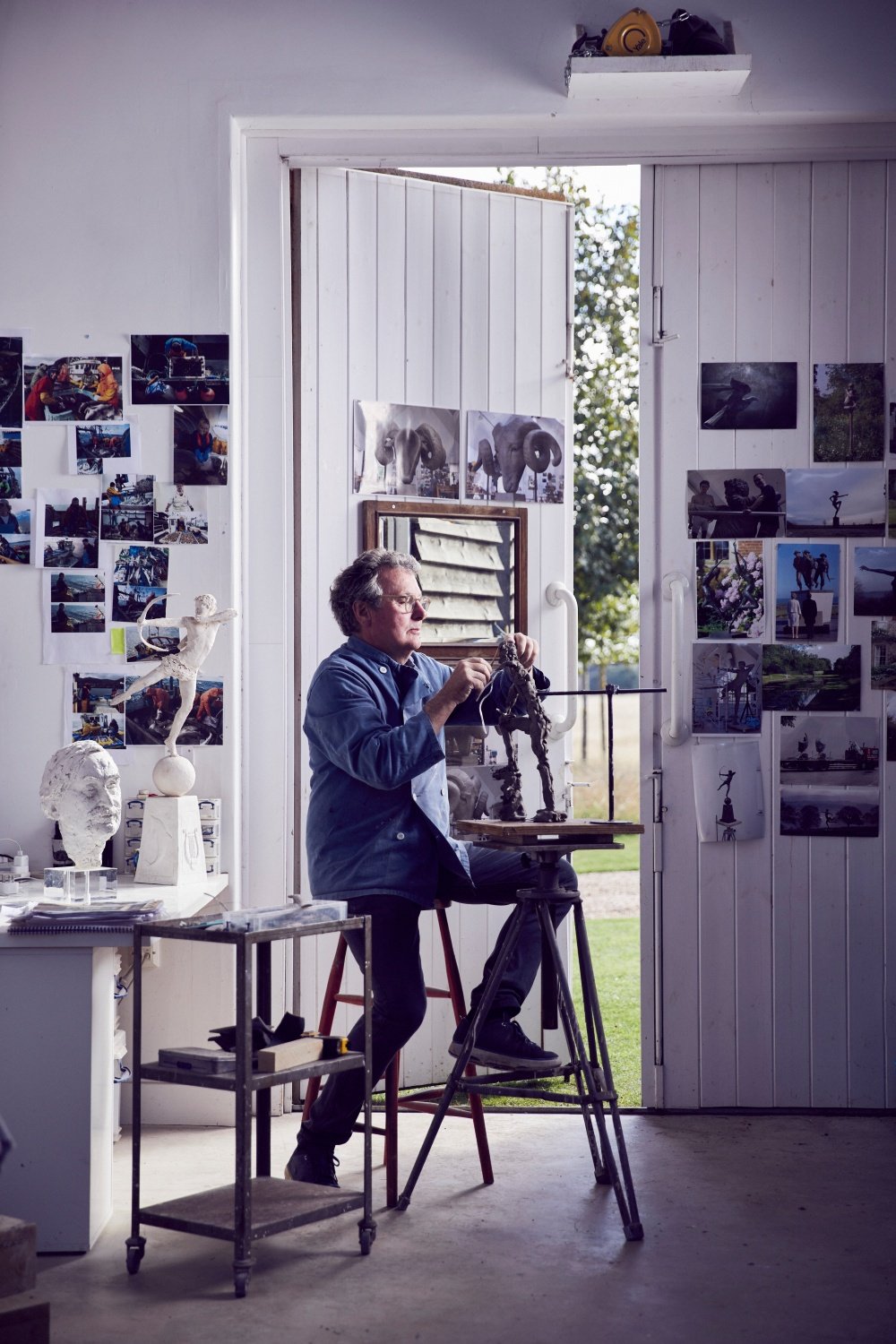
“I sat with the client on the portico of his house as we agreed where the piece would go in his grounds, on a site a quarter of a mile away, and then erected a massive piece of plywood at the site to judge the appropriate size to fit the view,” explains David. “Scale is so important, one reason why I find it so key to see the site where my work is intended for myself, to stand in it, to understand the feeling of scale.”
David’s appreciation of scale and artistic interest was encouraged by his great-uncle, Welsh architect Sir Clough Williams-Ellis, who designed and oversaw the building of the much-praised coastal village of Portmeirion in North Wales. His family’s artistic pedigree included his late parents, keen amateur painters, and his sister Bronwyn, working today as a ceramicist. Growing up in this creative environment fostered an early appreciation of beauty and a lifelong passion for art.
David started “messing around with sand and making things in plasticine” as a young boy growing up in Wales before a school master at his Buckinghamshire senior school, Stowe, encouraged him to try sculpting in clay. He trained in Florence and London and spent time working in marble in Pietrasanta in the Carrara Mountains, and by the age of 25 had exhibited in London, Paris and California. Today, aged 60, his catalogue of work includes public and private commissions, with Bryan Ferry and the Duke of Westminster among his well-known clients.
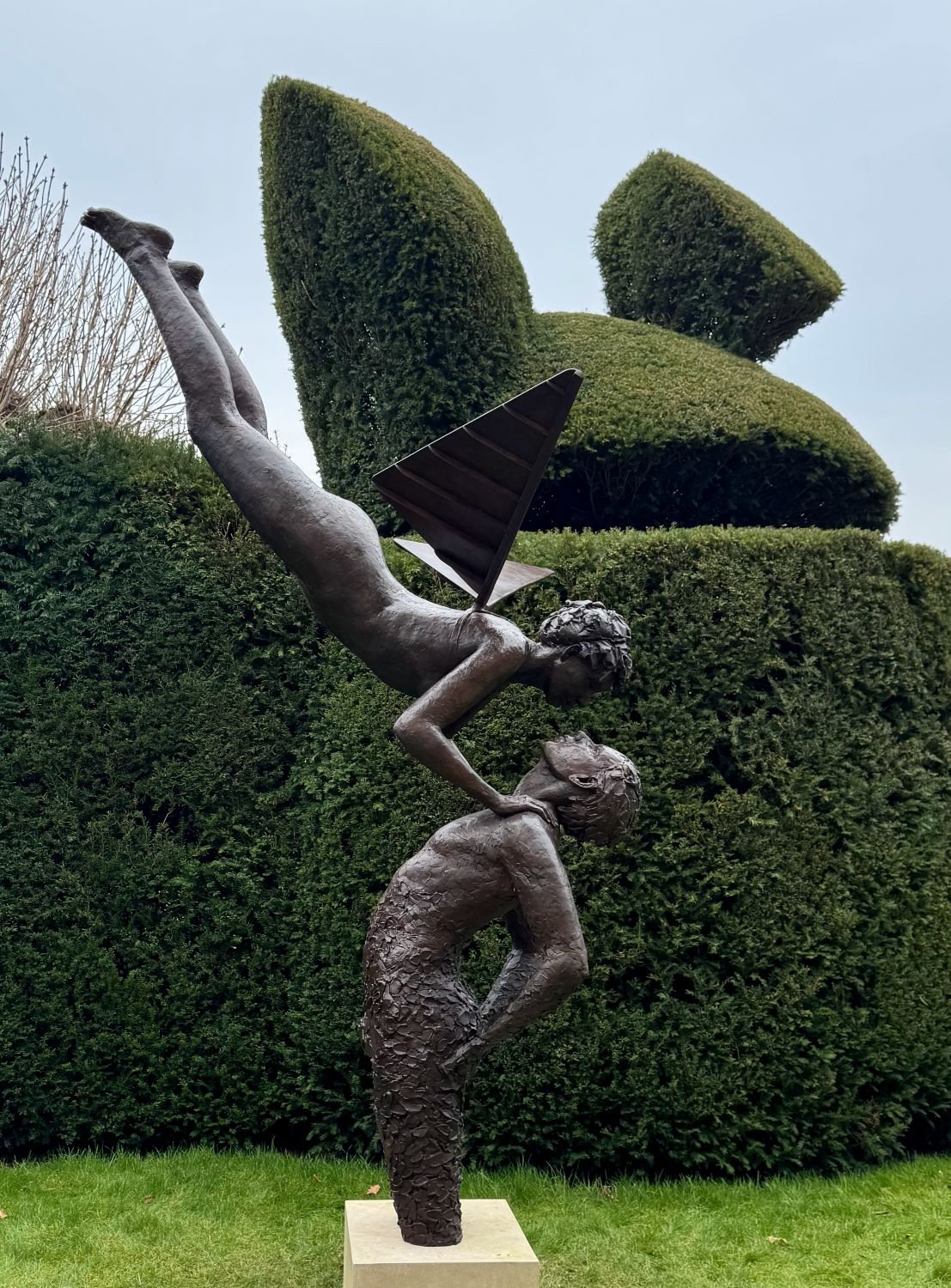
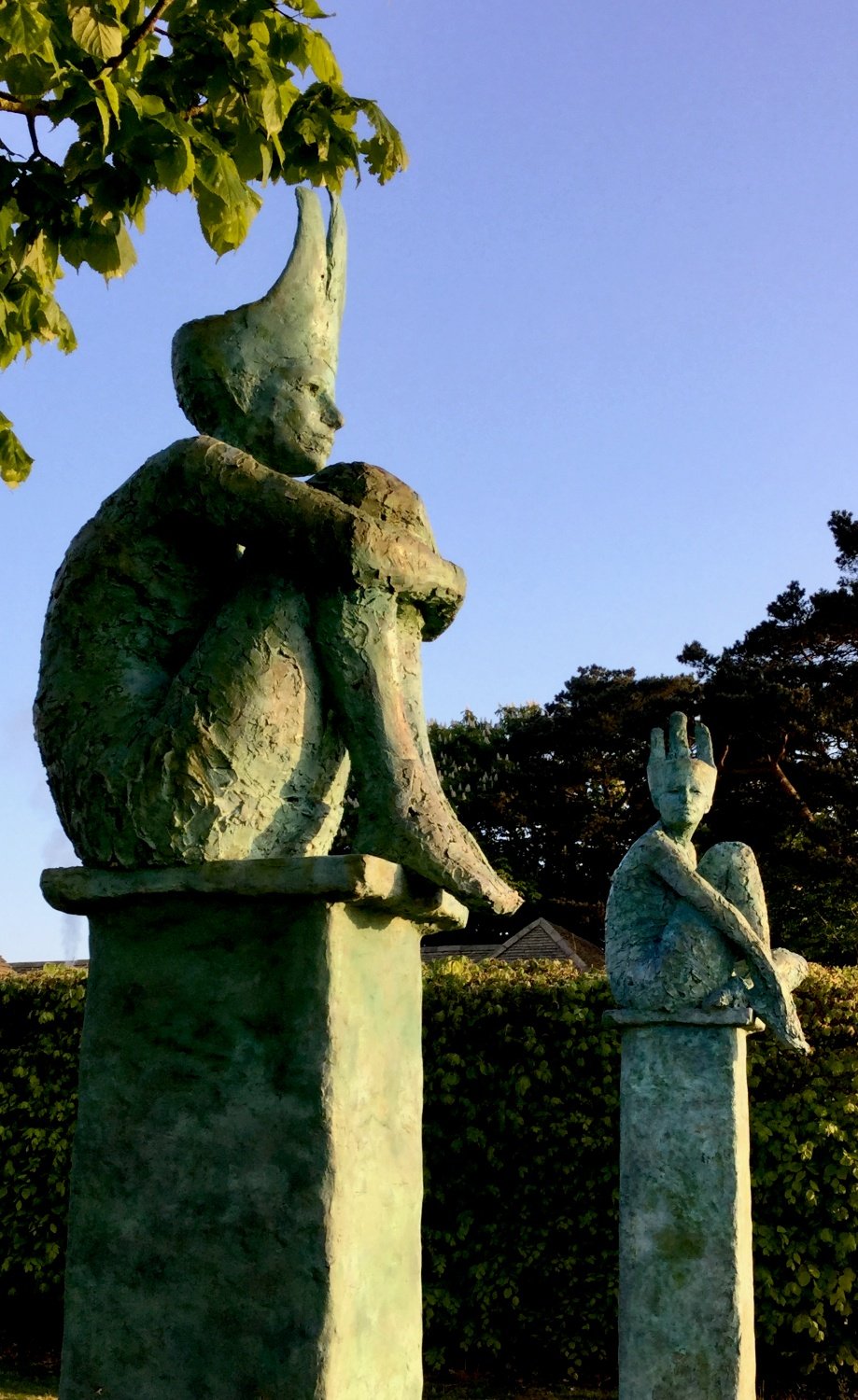
His work The Choir Boys celebrates the wedding of Nikki’s son Edo Mapelli Mozzi to Princess Beatrice in 2020 and is on permanent display at St James’ Palace. Other outstanding works include the Hurricane Girls, two spirit-lifting, windswept dancing figures commissioned for a private collector in Antigua that hover enticingly over a view of the Caribbean Sea, and a 1.5 times life-size work at Manchester City’s Etihad Stadium of three of their 1960s-70s ‘golden era’ heroes.
Does he have a favourite work among this extensive catalogue? He is hesitant to choose one above all others but referencing his own family’s past military service, he acknowledges the importance of his poignant D-Day memorial.
Commissioned by the Normandy Memorial Trust to mark the 75th anniversary of the 1944 D-Day landings, one of WWII’s most audacious moments and still the largest seaborne invasion in history, his memorial work is a remarkable study. Part of the British Normandy Memorial where the names of all 22,442 Allied personnel who made the ultimate sacrifice are etched into 160 columns, the work is a bronze sculpture of three infantry men carrying rifles and caught in perpetual movement. The memorial, overlooking Gold Beach, was inaugurated by then Prime Minister Teresa May and French President Emmanuel Macron in 2019.

“My father commanded a torpedo boat for the Royal Navy in the Channel aged just 22 at the time so it does have a personal resonance for me,” he says. “The Trust appointed me as the sculptor without seeing a design first, a rare privilege. I work well when I have the freedom to articulate an idea. With this work, it was crucial to feel the heaviness of the soldiers trudging through wet sand, their energy and focus.”
His ability to express movement, whether the light step of a female dancer or the solidity of a footballer or soldier, is a notable aspect of his work. It is instinctive, he says, a question of getting the balance right, the point of a foot placed just so.
“Mostly, I model in clay and cast in bronze,” David says. “It is structurally strong, pours easily so making it easier to add detail, plus which the colouring is so pleasing, the patination and how it evolves in its environment. I love the challenge of sculpting, the visual and artistic challenge, and the variety of what I do. There’s a real endorphin rush when I get the design right in my head and then again when I am halfway through and it is clear that I am on the right track.”
Born in Northern Ireland, brought up in Wales and resident in Cumbria for 20 years, David is now well settled in the Cotswolds, an area he acknowledges is a creative hub. “There are lots of creatives here. Not just artists but also a good range of stimulating people, architects, novelists, historians, journalists,” he says. “It is easier for my work too as most foundries are in southern England and it is straightforward for clients to get here to meet and for me to find models. Then of course it is so visually pretty. Parts remain totally unspoilt, a 1950s Ealing Studio vision of what southern England used to look like.”
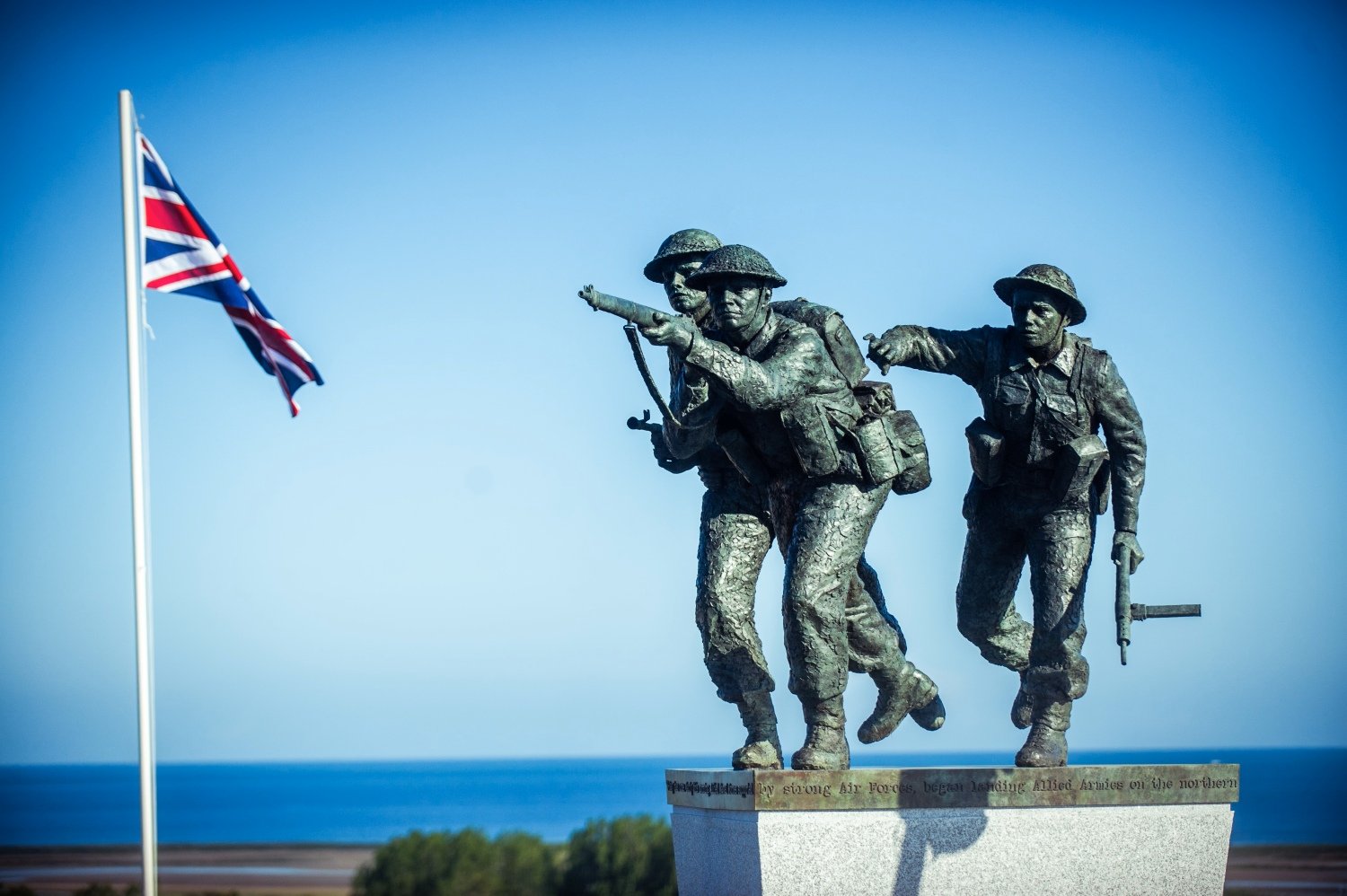
Commissioning a sculpture
David Williams-Ellis’ work sells for between £5,000 and £500,000. Recasts of existing works are more financially affordable while one-off designs carry a premium.
“Many people considering commissioning a sculpture for the first time are unsure how the process works but they soon develop a passion for it and enjoy the process enormously,” he says.
The Oxfordshire Cotswolds
David lives in the village of Over Worton on the eastern edge of the Cotswolds, nine miles from Chipping Norton. The village of Great Tew, home to the Beckham’s country estate, members’ club Soho Farmhouse and the chic thatched-roofed café and restaurant Quince and Clover, is seven minutes away by car. It’s a peaceful area that combines beautiful Cotswolds countryside, traditional rural pubs and easy access to west London through trains from Banbury to Marylebone and Kingham to Paddington. Highly rated local schools include Bloxham School and Tudor Hall.
